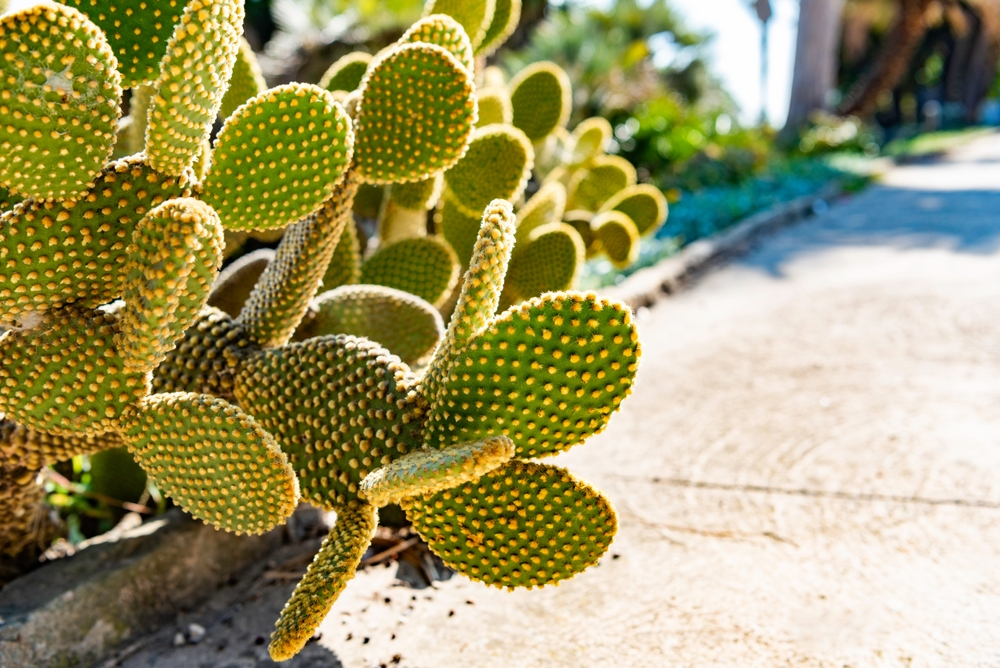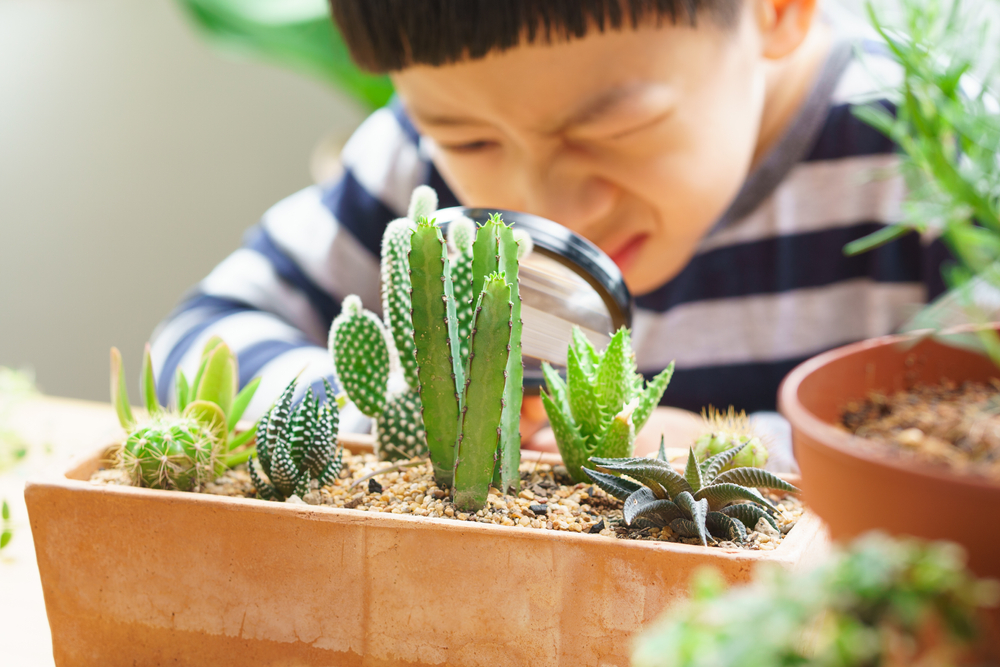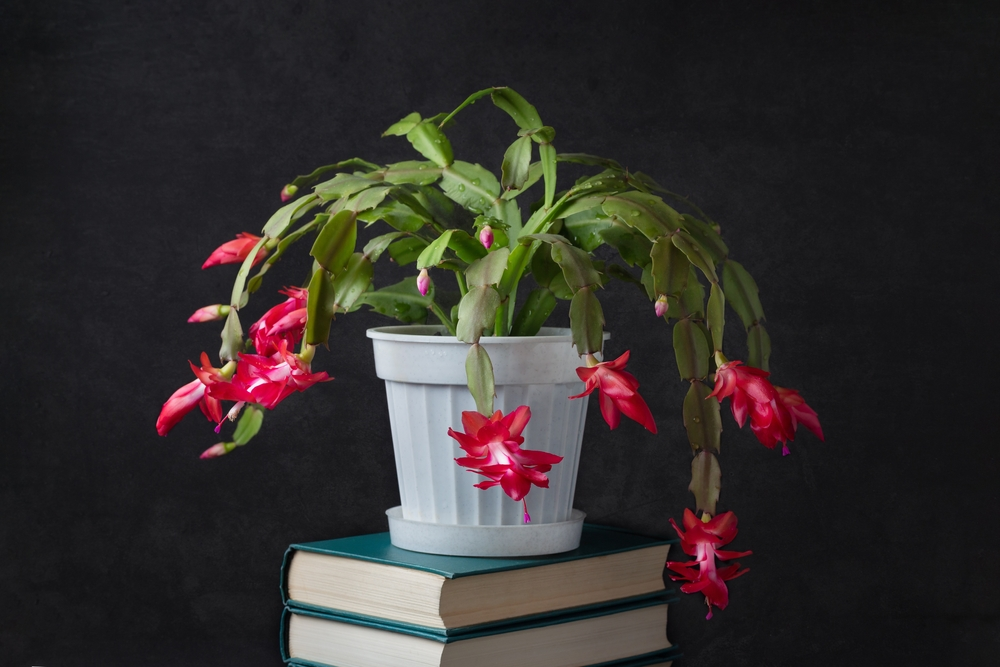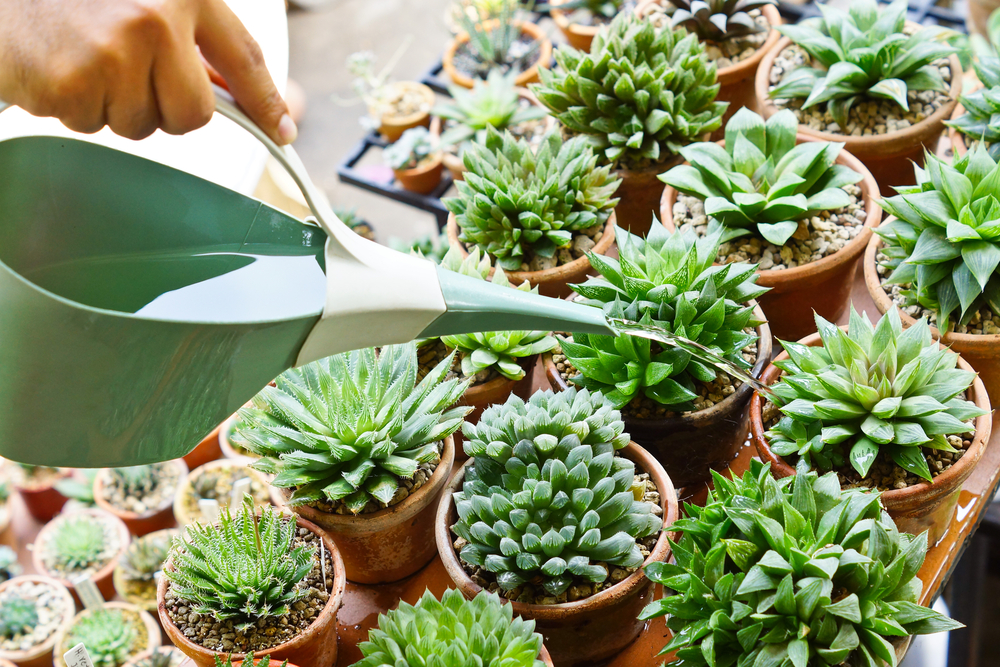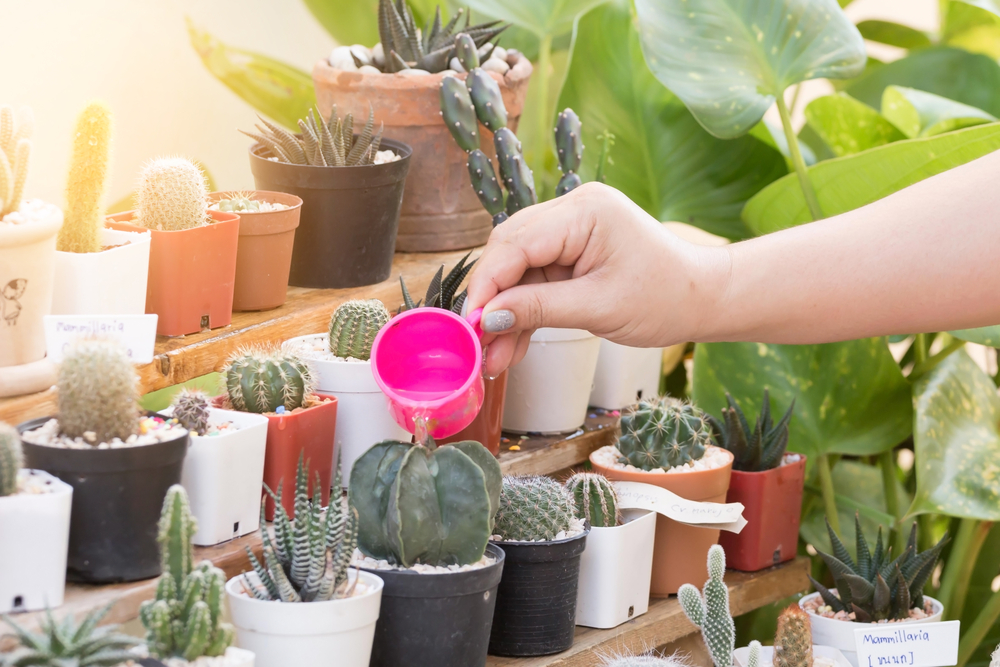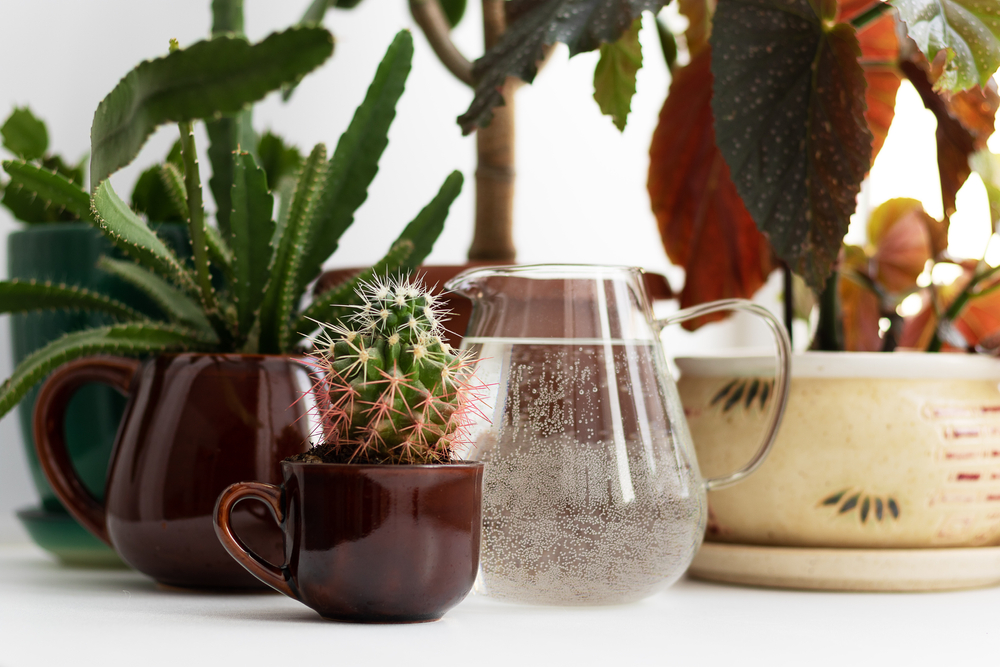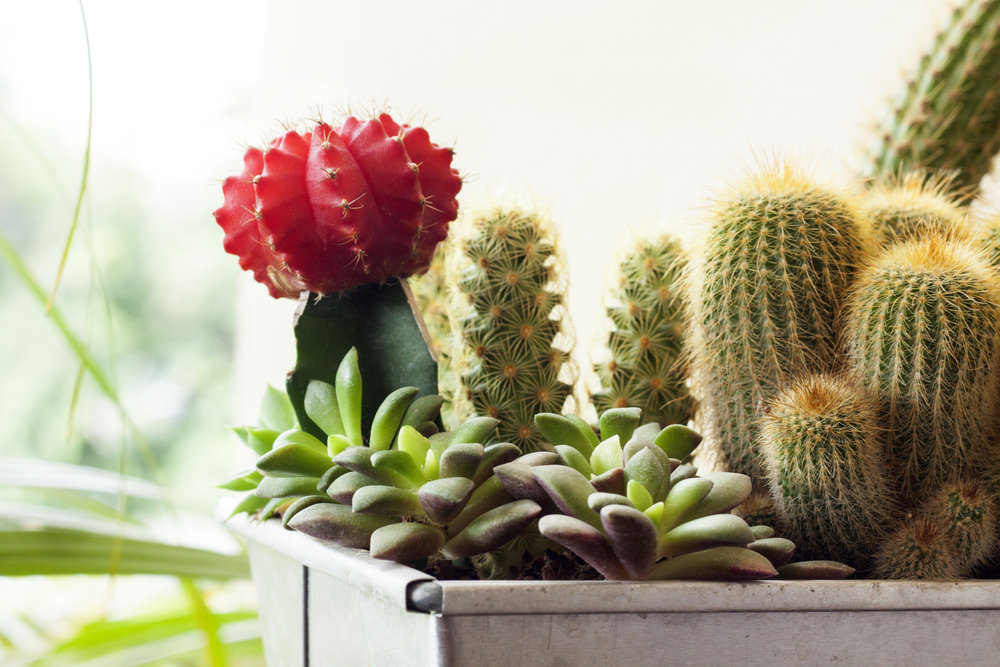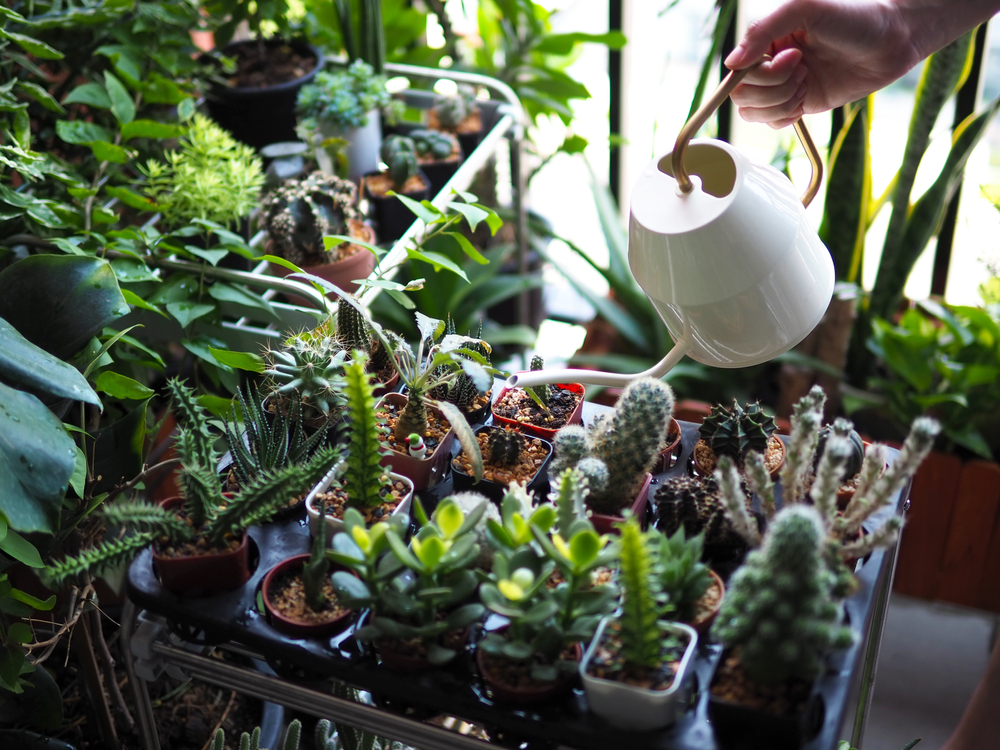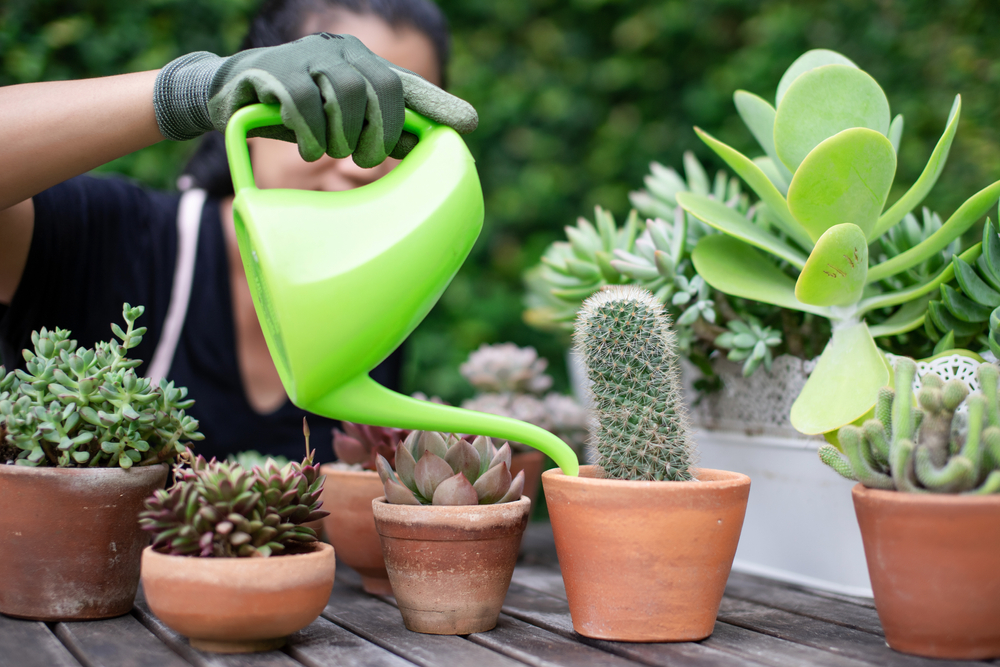HousePlantJoy is supported by our audience. When you purchase through one of our links, we may earn a small affiliate commission. As an Amazon Associate I earn from qualifying purchases. Your cost is not affected.
==================
With their striking appearance and low-maintenance nature, the cacti plants have become increasingly popular indoor plants. However, proper care is essential to ensure your cactus thrives and adds beauty to your space. One crucial aspect of cactus care is watering. “How often should I water my cactus?” you might ask, and what are the best techniques to keep it alive and healthy? Let’s dive into cactus care and explore essential tips on watering schedules, methods, and factors to consider.
Short Summary
- Cacti should be watered every 7-10 days in spring and summer and every 10-15 days in fall/winter.
- Assess soil moisture to determine when cactus needs watering. Use rainwater or distilled water for the best results.
- Know species’ specific needs, pot size & material, and environmental conditions to ensure proper hydration during dormancy.
Watering Frequency for Indoor Cacti
Watering frequency is crucial to maintaining healthy cactus plants indoors. Most cacti prefer their potting soil to dry out completely between waterings to prevent root rot and other issues caused by excess moisture. It’s important to consider their natural habitat when determining watering frequency. Generally, during the growing season, it is advised to water cactus plants every 7-10 days in spring and summer and every 10-15 days in fall and winter. This schedule mimics the arid conditions of their natural habitat, promoting optimal growth and preventing water-related problems.
However, consider that several factors, such as the cactus species, pot size and material, and environmental conditions, can affect the ideal watering frequency.
Related: Christmas Cactus Care and Advice 101
Spring and Summer Watering
During the warmer seasons, when cacti experience a more active growth period, they require more frequent watering. It’s crucial to strike the right balance between proper hydration and avoiding common pitfalls like overwatering vs underwatering cactus. Aim to water your cactus every 7-10 days with well-draining potting soil to ensure optimal growth. Keep in mind that younger and smaller cacti might need more frequent watering to encourage faster growth.
Always provide deep watering, saturating the desert cacti soil, specifically formulated for cacti, completely with rainwater or distilled water until it drains from the pot’s drainage holes. This will encourage strong root growth and prevent overwatering issues.
Fall and Winter Watering
Cacti enter a dormant season as temperatures drop and daylight hours decrease, requiring less frequent watering. It is recommended to water cactus plants every 10-15 days in fall and winter. You can extend the watering interval to every four to six weeks for more enormous cacti in bigger containers, depending on the soil moisture.
Remember that overwatering during this period can lead to root rot and damage the health of your cactus plants, so it’s essential to monitor the cactus soil, especially avoiding soggy soil, completely to determine when it’s time to water.
Assessing Soil Moisture: When to Water Your Cactus
Before grabbing your watering can, assessing the soil moisture is essential to determine when your cactus needs water and prevent issues like root rot. Using your fingers or a moisture meter is the most effective way to measure soil moisture.
Ideally, the soil should be at least 90% dry before watering, as overwatering can lead to root rot and damage to the plant. By closely monitoring soil moisture, you can ensure your cactus receives the proper water to thrive.
Using Your Finger
One simple and effective method to evaluate soil moisture is by inserting your finger into the top inch of the soil. If the soil feels dry and crumbly, watering your cactus is time. This method is cost-effective and provides you with a hands-on approach to understanding your cactus’s hydration needs.
By regularly checking the soil moisture, you can develop a better sense of your cactus’s watering schedule and ensure its health and well-being.
Using a Moisture Meter
Consider using a moisture meter for a more accurate assessment of soil moisture. This device measures the moisture content of the soil, providing you with a numeric reading to guide your watering decisions. To use a moisture meter, insert the probe into the soil and read the results on the display.
A reading of 0-3 indicates dry soil, 4-7 indicates moist soil and 8-10 indicates wet soil. Based on the reading, you can adjust your watering frequency accordingly, ensuring your cactus receives the proper amount of water.
Types of Water for Cactus Care
While tap water is suitable for watering cacti, rainwater or distilled water is preferable due to tap water’s mineral and chemical contents. These impurities can block necessary nutrients, hindering the health and growth of your cactus.
Rainwater or distilled water provides a cleaner alternative, devoid of dissolved minerals and chemicals, ensuring your cactus receives the best possible hydration. Providing your cactus with the right type of water can significantly affect its overall health and well-being.
Proper Watering Techniques for Cactus Plants
To promote healthy cactus growth, it’s essential to employ proper watering techniques. Watering cacti deeply until water drains from the pot’s drainage holes ensure sufficient hydration. Planting your cactus in a pot with drainage holes is crucial to avoid rotting.
Additionally, it is essential to avoid misting your cactus, as excess surface moisture can lead to disease, weakened roots, and moldy pads. By following these proper watering techniques, you can ensure the health and longevity of your beloved cactus.
Deep Soaking
Deep soaking is an essential watering technique for cacti. To deep soak your cactus, slowly and thoroughly water the plant until the soil is completely saturated and any excess water drains from the bottom of the pot. This method ensures the roots are adequately hydrated, promoting strong root growth and preventing overwatering issues.
By regularly deep soaking your cactus, you can provide the optimal hydration it needs to thrive and grow.
Related: 13 Types of Cactus Houseplant: Best Cactus Indoor Plants to Grow
Bottom Watering
Another effective watering technique for cacti is bottom watering. This method involves placing the pot with drainage holes in a saucer or other container filled with water, allowing the soil to absorb water from the bottom. Bottom watering encourages cactus roots to grow downwards towards the water source, making them stronger and more resilient.
Additionally, this method helps to avoid overwatering, as the soil will only take in the required amount of water. By employing the bottom watering technique, you can ensure your cactus receives proper hydration while promoting robust root growth.
Signs of Overwatering and Underwatering
Knowing the signs of overwatering and underwatering is crucial to maintaining a healthy cactus. Symptoms of overwatering include waterlogging in the soil, root rot, and brown spots on the plant. Conversely, signs of underwatering are wilted, wrinkled, or shriveled skin, dry soil, and weak spines.
By recognizing these symptoms, you can adjust your watering practices accordingly and ensure the optimal health of your cactus.
Overwatering Symptoms
An overwatered cactus may exhibit softness, wrinkling, and browning or overly plump pads, indicating the presence of excess moisture. The cactus may also appear stale, unhealthy, and rotten, with black or brown spots and mushy stems due to a fungal infection in the soil.
If you notice any of these symptoms, adjusting your watering practices to prevent further damage to your cactus and promote its recovery is essential.
Underwatering Symptoms
Underwatered cacti may display wilted, wrinkled or shriveled skin, indicating insufficient hydration. Additionally, the soil may be arid and crumbly, and the spines may appear weak and limp.
By recognizing these symptoms, you can adjust your watering practices to give your cactus the hydration it needs to thrive.
How to Save a Struggling Cactus
If your cactus is showing signs of overwatering or underwatering, don’t despair – there are steps you can take to revive your struggling plant. In the case of an overwatered cactus, repotting, removing diseased soil, and treating the roots with fungicides can help save the plant.
For an underwatered cactus, simply resuming a proper watering schedule will likely lead to recovery. By taking the necessary steps to address the issue, you can nurse your cactus back to health and enjoy its beauty again.
Saving an Overwatered Cactus
To save an overwatered cactus, first, remove it from its pot and examine the roots for any signs of rot or disease. Trim away any mushy or black roots, then repot the cactus in fresh, dry soil.
Please reduce the amount of water given to the cactus and ensure it is in a well-ventilated area to promote recovery. By addressing the overwatering issue and taking the necessary steps to revive your cactus, you can help restore its health and vitality.
Related: Holiday Cactus Care
Saving an Underwatered Cactus
In the case of an underwatered cactus, the solution is often as simple as resuming a proper watering schedule. Slowly reintroduce water to the cactus, ensuring that you don’t overwater it in the process.
You may notice signs of new growth as the plant recovers, such as fresh leaves or stems. By carefully adjusting your watering practices, you can help your underwatered cactus regain strength and health.
Factors Affecting Cactus Watering Needs
Several factors can influence how often you should water your cactus, including the species, pot size and material, and environmental conditions. Understanding these factors can help you develop a more personalized watering schedule that caters to your cactus’s specific needs.
By considering these factors, you can ensure that your cactus receives the proper amount of water for optimal health and growth.
Cactus Species
Different cactus species have varying watering needs, so it’s essential to identify the species of your cactus to determine its specific watering requirements. Some species may need more frequent watering, while others may require less.
By understanding the unique needs of your cactus species, you can tailor your watering practices to ensure its health and vitality.
Pot Size and Material
The size and material of your cactus’s pot can also affect its watering needs. Larger pots take longer for the cactus to absorb water, requiring less frequent watering, while smaller pots may need to be watered more often. Terracotta pots are recommended for cacti, as they help regulate moisture levels and prevent overwatering.
By selecting the appropriate pot size and material for your cactus, you can ensure proper hydration and prevent potential issues caused by improper watering.
Environmental Conditions
Environmental conditions, such as indoor humidity, temperature, and exposure, also play a role in determining your cactus’s watering needs. Cacti must be watered more frequently in hot and dry climates than in cold and wet environments.
Increased airflow can also accelerate evaporation, necessitating more frequent cactus watering. By considering the environmental conditions in which your cactus grows, you can adjust your watering practices accordingly to ensure optimal health.
Cactus Care During Dormancy
Cacti typically enter a dormant period during winter, requiring less water. During this time, reducing watering or even stopping it completely for long periods is essential to avoid infection and root rot.
By understanding your cactus’s dormancy needs and adjusting your watering practices accordingly, you can help maintain its health throughout the colder months and ensure its continued growth and vitality when the growing season resumes.
Summary
Proper watering is crucial for maintaining healthy, vibrant cacti in your indoor space. By understanding the factors influencing watering frequency, such as species, pot size and material, and environmental conditions, you can develop a personalized watering schedule that caters to your cactus’s specific needs. Employing proper watering techniques, such as deep soaking and bottom watering, and monitoring soil moisture will ensure your cactus receives the optimal hydration it requires to thrive. By following these essential tips, you can enjoy your cactus’s beauty and low-maintenance nature for years to come.
Frequently Asked Questions
How often should I water my indoor cactus?
It’s best to water your indoor cactus on a regular schedule. During summer and spring, this means watering it every 10 days or so when the potting soil is at least 90% dry. During winter, water your cactus about every 4 weeks when temperatures are cooler and the air is dryer.
How do I know if my cactus needs water?
To check if your cactus needs water, look for signs of dryness on the surface. Also use a moisture meter to measure the soil’s moisture level, and if it reads low, or you can’t feel any moisture at least 2” down, your cactus is likely in need of a drink.
Does cactus need direct sunlight?
Yes, cacti need direct sunlight to survive and thrive. Placing them in a south facing position will provide the best amount of sunlight.
However, be careful not to leave them in direct sunlight for too long because intense light can cause the plants to turn yellow.
How do you water a cactus without killing it?
Water cacti profoundly but infrequently. Provide your cactus with deep watering, but allow the soil to dry in between waterings thoroughly.
Water your cactus more often during the growing season, typically in spring and summer. Check the soil for dryness before watering each time.
To water a cactus properly without killing it, ensure the soil is arid before adding water, use tepid rainwater if possible, and water deeply but infrequently during the growing season. Make sure any excess water can drain away freely.
How to take care of cactus?
Caring for cactus requires a little patience and dedication. Make sure your cacti receive enough light, but only a little. Properly water them, using suitable soil and fertilizer.
You can also get a prickly pear cactus for extra protection against handling errors. With these simple steps, you can have healthy cacti in no time!
Read More



